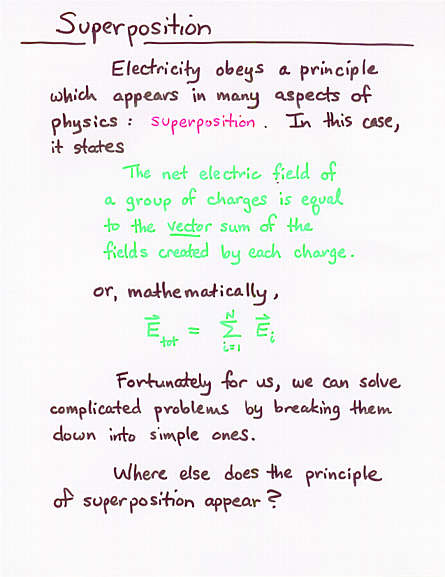
Linear dependent sources (voltage or current) are those whose variable is proportional to the first power of current or voltage, or sum of these variables.

For now we have considered only resistive linear circuits with voltage-current characteristics v ( t ) = R * i ( t ). Linear elements are those whose voltage-current characteristics is linear. Linear circuits contain only linear elements. Superposition principle also has its limitations: All inactive current sources are presented like opened circuits. An inactive voltage source are present like a short circuit. Each independent source is active in only one measurement. Let us model a circuit with independent and dependent sources in it.

The physical meaning of this principle states that nodal voltage of any node in linear electric circuit is an algebraic sum of the voltages that has been produced by each current source, acting alone.

The idea of the principle is to determine the mesh current caused by each EMF in the mesh acting alone, and to sum them up. This rule is called superposition principle. The current in any mesh, containing more then one EMF, is an algebraic sum of mesh currents, caused by each EMF acting alone. (This is a “toy” example to give you a feel for superposition.In the linear circuit with voltage sources, mesh currents are linear functions of mesh EMFs. Refresh me on the scaling property and linearity. The linearity property is what lets us use superposition to help solve a circuit. The output, $i$, equals the input, $v_i$, scaled by a constant, $\text R$. Looking at our resistor function, we see it has the scaling property. With this notation, we are viewing the resistor as a function that takes in a voltage and outputs a current. The output of our function will be the current, $i$, measured by some not-shown current meter.įunction: The function itself comes from the resistor, described by Ohm’s Law. For this function, we choose the output to be the current $i$. Output: We assign the output to be the interesting thing we want to know. The input voltage is applied to the two small circles (the circles indicate the input port to our function). Assume input $v_i$ is generated by some voltage source we’re not showing. Input: We decide (arbitrarily) that voltage $v_i$ will be the input of our resistor function. We just talk about Ohm’s Law using function terminology.īegin by identifying three things: the inputs, outputs, and the thing performing the function. Start simply… How might we represent a lone resistor using functional notation? There’s nothing remarkable going on here. You used functional notation in algebra class when you wrote something like $f(x) = 2x + 3$. The principle of superposition uses functional notation, so we talk a bit here about how circuits can be represented as functions. The final result is the sum of individual results. Next, you analyze two (or more) much simpler circuits. To suppress a current source, replace it with an open circuit. To suppress a voltage source, replace it with a short circuit. To solve a circuit using superposition, the first step is to turn off or suppress all but one input. The principle of superposition is another name for the additivity property of Linearity,

Superposition works because of linearity. Use it when your circuit has multiple inputs or power sources.īefore reading this article, I recommend you review the concept of Linearity. Superposition is a superpower to add to your toolkit of circuit analysis methods.


 0 kommentar(er)
0 kommentar(er)
